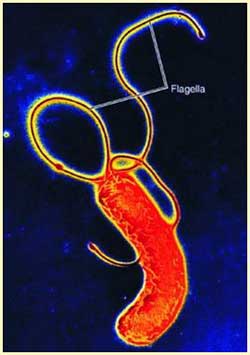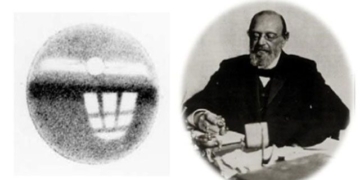 |
The Helicobacter pylori bacteria disturb the human gastrointestinal tract (Photo: hunter.cuny.edu) |
Science discovered the Helicobacter pylori bacteria, notorious for disturbing the human gastrointestinal tract, in 1981. However, according to a research team from the United States, led by microbiologist Martin Blaser, it has actually existed for a much longer time.
The team of experts analyzed genetic samples of Helicobacter pylori bacteria found in the intestines of populations in East Asia, Europe, and Native American tribes. They discovered that the bacteria residing in the intestines of Asian and Native American populations share nearly identical genomes, while exhibiting significant differences compared to the genomes of bacteria found in European individuals.
Genetic analysis of intestinal bacteria from mummies in China dating back 2,000 years also revealed that they are indistinguishable from the Helicobacter pylori found in the intestines of present-day East Asians.
Martin Blaser noted that the Helicobacter pylori bacteria likely first emerged in Asia before gradually spreading to Europe. The discovery of this bacterium in the intestines of individuals from tribes living in relative isolation in the Americas indicates that at least 11,000 years ago (when Asians migrated to the Americas), this bacterium had already found a way to parasitize humans. Under certain conditions, it can attack the intestinal wall, leading to mild ailments such as stomach pain, digestive disorders, and diarrhea.
NGUYỄN SINH


















































